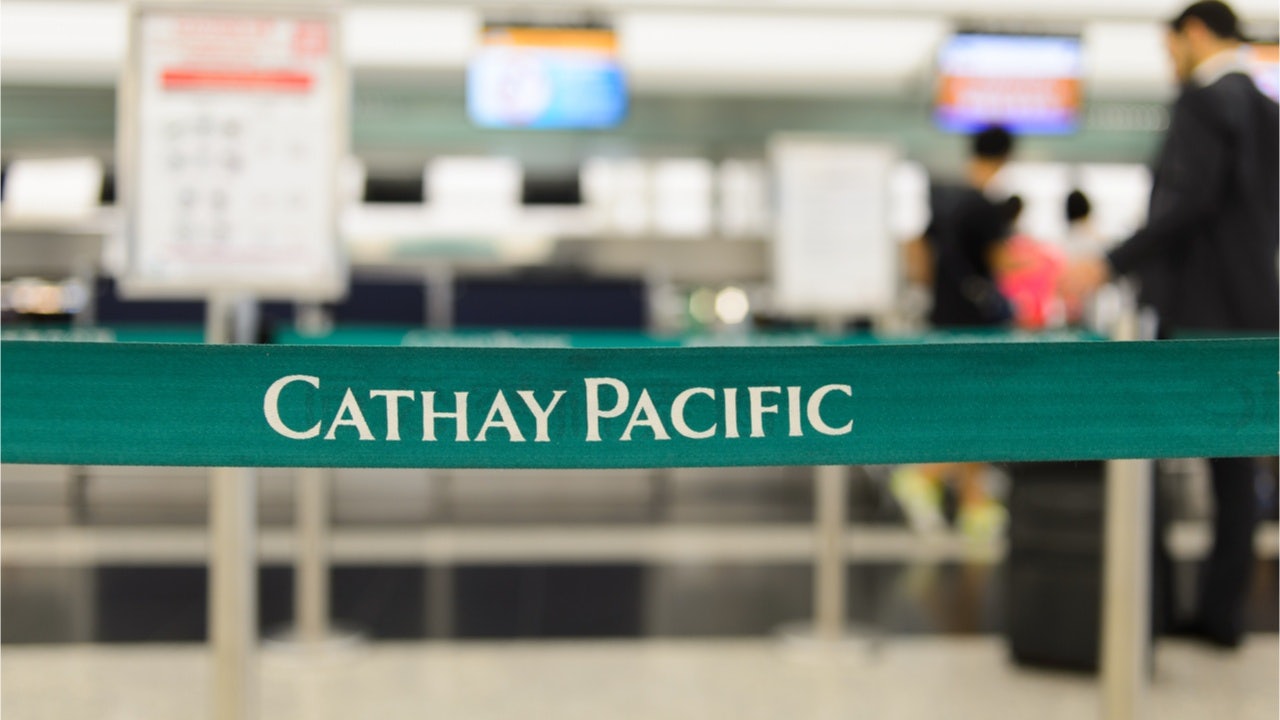As the protests that have roiled Hong Kong for months deepen, Beijing is taking unprecedented measures in an effort to reclaim control without looking too overtly involved. This month, pressure from the central government in Beijing took the form of open pressure on private companies and their CEOs in Hong Kong to demand their loyalty to the mainland and against the protestors — or any narrative that goes against the one-China principle.
In mid-August, Rupert Hogg, the CEO of flagship Hong Kong airline Cathay Pacific, was forced to step down “to take responsibility as a leader of the company in view of recent events,” on the heels of mounting pressure from Beijing. CCTV, China’s state-run broadcasting network, announced the resignation 30 minutes before Cathay Pacific made the news public.
The motivation behind Hogg’s departure was rumored to be due to a refusal to hand over the names of employees who sympathized with the Hong Kong protesters, although this has been widely disputed. What is known, however, is that a failure — in Beijing’s eyes — to rein in staff participating in protests was one of the driving forces behind Chinese pressure on Hogg.
Hogg’s forced resignation immediately set observers off. As Investor David Webb wrote on his blog, “This is the most appalling kowtow to Peking... Every substantial employer in Hong Kong, in both the public and private sectors, has employees who have participated in marches that have frequently gone beyond their approved spatial or time limits. Should all the CEOs resign?”
Pressure on Cathay Pacific extended far beyond just the CEO. As the Washington Post reported in the wake of Hogg’s resignation, “[Cathay Pacific] staff describe a climate of fear and mistrust in their ranks, as Chinese officials target flight crews with thorough searches of their luggage and personal devices — including deleted files and secure messaging apps — for any signs of protest sympathies. Some have had their phones’ content downloaded by Chinese authorities. Others have seen their private information published in public messaging groups; their anti-government inclinations laid bare.”
Beyond rattling staff, China’s moves also rattled Cathay’s bottom line. Bloomberg confirmed that two Beijing controlled conglomerates, China Citic Bank and China Resources, forbade employees from flying Cathay for business in August. Essentially, Beijing looked to make an example of Cathay Pacific for anyone in the world planning to do business in China — compliance with the Party’s worldview, and no wiggle room.
Clearly, Cathay Pacific took the hit and is toeing the Party line, at least publicly. The question now is: should luxury brands operating in China also be afraid?
In recent months, we have seen a number of luxury brands forced to very publicly apologize— with several losing their celebrity or influencer collaborations — over products, t-shirts, or websites that were accused by Beijing of not respecting the one-China policy. Brands were named and shamed for listing Hong Kong, Taiwan, and Macau as separate territories or countries on their e-commerce platforms or on individual products. Versace, Calvin Klein, Coach, Givenchy, ASICS, Fresh, and Valentino are some of the brands that have recently made public apologies to appease China.
While there are no signs that China has any plans to make more of an example of these brands and force them to go far beyond the “apologize, sit in time-out, back to normal, and repeat the process at the next sensitive moment” playbook and demand the firing of their executives, we’re in uncharted waters post-Cathay.
As usual, the perennially furious Global Times stated in no uncertain terms in an opinion piece that any support for Hong Kong protests or failure to recognize and comply with China’s Party line would be met with retaliation. Wrote the Global Times, “Companies should not become accomplices of the [Hong Kong] rioters. Moreover, they need to see themselves as an important symbol of maintaining a stable and prosperous society.”
The piece went on to point out something that will undoubtedly annoy brands that have been stung by online-fueled boycotts in China, saying “behavior that hurts Chinese people's feelings are always eventually uncovered by netizens, and the companies guilty of such behavior are criticized or boycotted.”
Basically, brands will see any “indiscretion” as defined or re-defined by Beijing and online mobs dug up and publicized to “motivate” more apologies and potentially firings. So a rehash of the Zadig & Voltaire flare-up of 2012? A Daimler throwback from 2016? Yet another show of regret from Dolce & Gabbana?
To date, we have not seen any luxury brands stand in open solidarity with Hong Kong protesters. On the contrary, they are keeping their heads down and, presumably, waiting for the city to settle to a new (luxury) normal, with mainland Chinese shoppers either bypassing the city for their hauls or spending less in the years ahead.
But what the last several weeks have shown is that any luxury brand that goes beyond those Beijing-set lines will quickly have mainland Chinese government (and online mob) pressure descend in a way that it hasn’t before — in an open sense. With so many brands in the market, and so many people involved in those brands from retail staff to marketing to execs, it’s only a matter of time before a brand really angers Beijing.
So the questions now are: how far will Beijing go, and how far with high-end brands go to toe the Party line in the hopes of continued access to the crucial but challenging Chinese market?

